Mode Switching Frequency of Electrohydraulic-Power-Coupled Electric Vehicles with Different Delay Control Times
Abstract
:1. Introduction
1.1. Research Motivation
1.2. Literature Review
1.3. Challenges and Problems
1.4. Contributions of This Work
1.5. Organization of the Paper
2. Structural Principle of an Electrohydraulic-Power-Coupled Electric Vehicle
3. Model Building and Control Strategy Building
3.1. Vehicle Dynamic Model
3.2. Electrodynamic Model
3.2.1. Motor Parameter Matching
3.2.2. Battery Parameter Matching
3.3. Hydraulic Power Model
Accumulator Model
3.4. Simplified Diagram of Strategy Construction
4. Analysis of Basic Typical Road Conditions
5. Verify the Feasibility of a Delay Control Strategy
6. Conclusions
Author Contributions
Funding
Institutional Review Board Statement
Informed Consent Statement
Data Availability Statement
Conflicts of Interest
References
- Zhou, Y.; Ravey, A.; Péra, M.-C. Multi-objective energy management for fuel cell electric vehicles using online-learning enhanced Markov speed predictor. Energy Convers. Manag. 2020, 213, 112821. [Google Scholar]
- Hong, J.; Wang, Z.; Chen, W.; Wang, L.; Lin, P.; Qu, C. Online accurate state of health estimation for battery systems on real-world electric vehicles with variable driving conditions considered. J. Clean. Prod. 2021, 294, 125814. [Google Scholar] [CrossRef]
- Wu, W.; Hu, J.; Yuan, S.; Di, C. A hydraulic hybrid propulsion method for automobiles with self-adaptive system. Energy 2016, 114, 683–692. [Google Scholar] [CrossRef]
- Xia, L.; Quan, L.; Ge, L.; Hao, Y. Energy efficiency analysis of integrated drive and energy recuperation system for hydraulic excavator boom. Energy Convers. Manag. 2018, 156, 680–687. [Google Scholar] [CrossRef]
- He, X.; Xiao, G.; Hu, B.; Tan, L.; Tang, H.; He, S.; He, Z. The applications of energy regeneration and conversion technologies based on hydraulic transmission systems: A review. Energy Convers. Manag. 2019, 205, 112413. [Google Scholar]
- Hong, J.; Wang, Z.; Yao, Y. Fault prognosis of battery system based on accurate voltage abnormity prognosis using long short-term memory neural networks. Appl. Energy 2019, 251, 113381. [Google Scholar] [CrossRef]
- Lu, X.; Chen, Y.; Wang, H. Multi-Objective Optimization Based Real-Time Control for PEV Hybrid Energy Management Systems. In Proceedings of the IEEE Applied Power Electronics Conference and Exposition (APEC), San Antonio, TX, USA, 4–8 March 2018. [Google Scholar]
- Hong, J.; Wang, Z.; Chen, W.; Yao, Y. Synchronous multi-parameter prediction of battery systems on electric vehicles using long short-term memory networks. Appl. Energy 2019, 254, 113648. [Google Scholar] [CrossRef]
- Liu, H.; Chen, G.; Xie, C.; Li, D.; Wang, J.; Li, S. Research on energy-saving characteristics of battery-powered electric-hydrostatic hydraulic hybrid rail vehicles. Energy 2020, 205, 118079. [Google Scholar] [CrossRef]
- Liu, H.; Jiang, Y.; Li, S. Design and downhill speed control of an electric-hydrostatic hydraulic hybrid powertrain in battery-powered rail vehicles. Energy 2019, 187, 115957. [Google Scholar] [CrossRef]
- Hu, J.; Mei, B.; Peng, H.; Guo, Z. Discretely variable speed ratio control strategy for continuously variable transmission system considering hydraulic energy loss. Energy 2019, 180, 714–727. [Google Scholar] [CrossRef]
- Gong, J.; Zhang, D.; Guo, Y.; Liu, C.; Zhao, Y.; Hu, P.; Quan, W. Power control strategy and performance evaluation of a novel electro-hydraulic energy-saving system. Appl. Energy 2018, 233–234, 724–734. [Google Scholar] [CrossRef]
- Yang, J.; Zhang, T.; Hong, J.; Zhang, H.; Zhao, Q.; Meng, Z. Research on Driving Control Strategy and Fuzzy Logic Optimization of a Novel Mechatronics-Electro-Hydraulic Power Coupling Electric Vehicle. Energy 2021, 233, 121221. [Google Scholar] [CrossRef]
- Hong, J.; Ma, F.; Xu, X.; Yang, J.; Zhang, H. A novel mechanical-electric-hydraulic power coupling electric vehicle considering different electrohydraulic distribution ratios. Energy Convers. Manag. 2021, 249, 114870. [Google Scholar] [CrossRef]
- Yang, J.; Zhang, T.; Zhang, H.; Hong, J.; Meng, Z. Research on the Starting Acceleration Characteristics of a New Mechanical–Electric–Hydraulic Power Coupling Electric Vehicle. Energies 2020, 13, 6279. [Google Scholar] [CrossRef]
- Brol, S.; Czok, R.; Mróz, P. Control of energy conversion and flow in hydraulic-pneumatic system. Energy 2019, 194, 116849. [Google Scholar] [CrossRef]
- Zhao, Q.; Zhang, H.; Xin, Y. Research on Control Strategy of Hydraulic Regenerative Braking of Electrohydraulic Hybrid Electric Vehicles. Math. Probl. Eng. 2021, 2021, 5391351. [Google Scholar] [CrossRef]
- Xiong, W.; Zhang, Y.; Yin, C. Optimal energy management for a series–parallel hybrid electric bus. Energy Convers. Manag. 2009, 50, 1730–1738. [Google Scholar] [CrossRef]
- He, H.; Wang, C.; Jia, H.; Cui, X. An intelligent braking system composed single-pedal and multi-objective optimization neural network braking control strategies for electric vehicle. Appl. Energy 2019, 259, 114172. [Google Scholar] [CrossRef]
- Hong, J.; Wang, Z.; Ma, F.; Yang, J.; Xu, X.; Qu, C.; Zhang, J.; Shan, T.; Hou, Y.; Zhou, Y. Thermal Runaway Prognosis of Battery Systems Using the Modified Multiscale Entropy in Real-World Electric Vehicles. IEEE Trans. Transp. Electrif. 2021, 7, 2269–2278. [Google Scholar] [CrossRef]
- Zeng, X.; Wu, Z.; Wang, Y.; Song, D.; Li, G. Multi-mode energy management strategy for hydraulic hub-motor auxiliary system based on improved global optimization algorithm. Sci. China Technol. Sci. 2020, 63, 2082–2097. [Google Scholar] [CrossRef]
- Hong, J.; Wang, Z.; Zhang, T.; Yin, H.; Zhang, H.; Huo, W.; Zhang, Y.; Li, Y. Research on integration simulation and balance control of a novel load isolated pure electric driving system. Energy 2019, 189, 116220. [Google Scholar] [CrossRef]
- Li, B.; Bei, S. Estimation algorithm research for lithium battery SOC in electric vehicles based on adaptive unscented Kalman filter. Neural Comput. Appl. 2018, 31, 8171–8183. [Google Scholar] [CrossRef]
- Wu, W.; Hu, J.; Jing, C.; Jiang, Z.; Yuan, S. Investigation of energy efficient hydraulic hybrid propulsion system for automobiles. Energy 2014, 73, 497–505. [Google Scholar] [CrossRef]
- Aymen, F.; Novak, M.; Lassaad, S. An improved reactive power MRAS speed estimator with optimization for a hybrid electric vehicles application. J. Dyn. Syst. Meas. Control. 2018, 140, 061016. [Google Scholar] [CrossRef]
- Aymen, F.; Berkati, O.; Lassaad, S.; Srifi, M.N. BLDC control method optimized by PSO algorithm. In Proceedings of the 2019 International Symposium on Advanced Electrical and Communication Technologies (ISAECT), Rome, Italy, 27–29 November 2019; pp. 1–5. [Google Scholar]
- Naoui, M.; Aymen, F.; Mouna, B.H.; Sbita, L. Brushless Motor and Wireless Recharge System for Electric Vehicle Design Modeling and Control. In Handbook of Research on Modeling, Analysis, and Control of Complex Systems; IGI Global: Hershey, PA, USA, 2020. [Google Scholar]
- Gao, J.P.; Wei, Y.H.; Liu, Z.N.; Qiao, H.B. Matching and optimization for powertrain system of parallel hybrid electric vehicle. Appl. Mech. Mater. 2013, 341–342, 423–431. [Google Scholar]
- Mu, Y.; Zhou, G.; Hou, D.; Zhu, M.; Xu, Y.; Song, N.; Gao, J. Parameter Matching and Simulation of Plug-in Hybrid Electric Bus. In Proceedings of the 2019 2nd International Conference on Information Systems and Computer Aided Education (ICISCAE), Dearborn, MI, USA, 7–10 September 2009; pp. 446–451. [Google Scholar]
- Khare, N.; Chandra, S.; Govil, R. Statistical modeling of SoH of an automotive battery for online indication. In Proceedings of the INTELEC 2008–2008 IEEE 30th International Telecommunications Energy Conference, San Diego, CA, USA, 14–18 September 2008. [Google Scholar]
- Miroslaw, T.; Szlagowski, J.; Zawadzki, A.; Zebrowski, Z. Simulation model of an off-road four-wheel-driven electric vehicle. Proc. Inst. Mech. Eng. Part I J. Syst. Control. Eng. 2018, 233, 1248–1262. [Google Scholar] [CrossRef]
- Kamal, E.; Adouane, L. Hierarchical Energy Optimization Strategy and Its Integrated Reliable Battery Fault Management for Hybrid Hydraulic-Electric Vehicle. IEEE Trans. Veh. Technol. 2018, 67, 3740–3754. [Google Scholar] [CrossRef]
- Işıklı, F.; Sürmen, A.; Gelen, A. Modelling and Performance Analysis of an Electric Vehicle Powered by a PEM Fuel Cell on New European Driving Cycle (NEDC). Arab. J. Sci. Eng. 2021, 46, 7597–7609. [Google Scholar] [CrossRef]
- Kuittinen, N.; McCaffery, C.; Peng, W.; Zimmerman, S.; Roth, P.; Simonen, P.; Karjalainen, P.; Keskinen, J.; Cocker, D.R.; Durbin, T.D.; et al. Effects of driving conditions on secondary aerosol formation from a GDI vehicle using an oxidation flow reactor. Environ. Pollut. 2021, 282, 117069. [Google Scholar] [CrossRef]
- Li, H.; Li, S.; Sun, W.; Wang, L.; Lv, D. The optimum matching control and dynamic analysis for air suspension of multi-axle vehicles with anti-roll hydraulically interconnected system. Mech. Syst. Signal Process. 2020, 139, 106605. [Google Scholar] [CrossRef]
- Chen, Y.; Li, C.; Chen, S.; Ren, H.; Gao, Z. A combined robust approach based onauto-regressive longshort-term memory network and moving horizon estimation for state-of-charge estimation of lithium-ion batteries. Int. J. Energy Res. 2021, 45, 12838–12853. [Google Scholar] [CrossRef]
- Xie, J.; Xu, X.; Wang, F.; Tang, Z.; Chen, L. Coordinated control based path following of distributed drive autonomous electric vehicles with yaw-moment control. Control Eng. Pract. 2020, 106, 104659. [Google Scholar] [CrossRef]
- Ouyang, Q.; Han, W.; Zou, C.; Xu, G.; Wang, Z. Cell Balancing Control For Lithium-Ion Battery Packs: A Hierarchical Optimal Approach. IEEE Trans. Ind. Inform. 2019, 16, 5065–5075. [Google Scholar] [CrossRef]
- Liu, S.; Shan, T.; Tao, R.; Zhang, Y.D.; Zhang, G.; Zhang, F.; Wang, Y. Sparse Discrete Fractional Fourier Transform and Its Applications. IEEE Trans. Signal Process. 2014, 62, 6582–6595. [Google Scholar] [CrossRef] [Green Version]
- Schlegel, M.; Škarda, R.; Čech, M. Running discrete Fourier transform and its applications in control loop performance assessment. In Proceedings of the 2013 International Conference on Process Control (PC), Strbske Pleso, Slovakia, 18–21 June 2013. [Google Scholar]
- Tao, R.; Li, Y.-L.; Wang, Y. Short-Time Fractional Fourier Transform and Its Applications. IEEE Trans. Signal Process. 2009, 58, 2568–2580. [Google Scholar] [CrossRef]
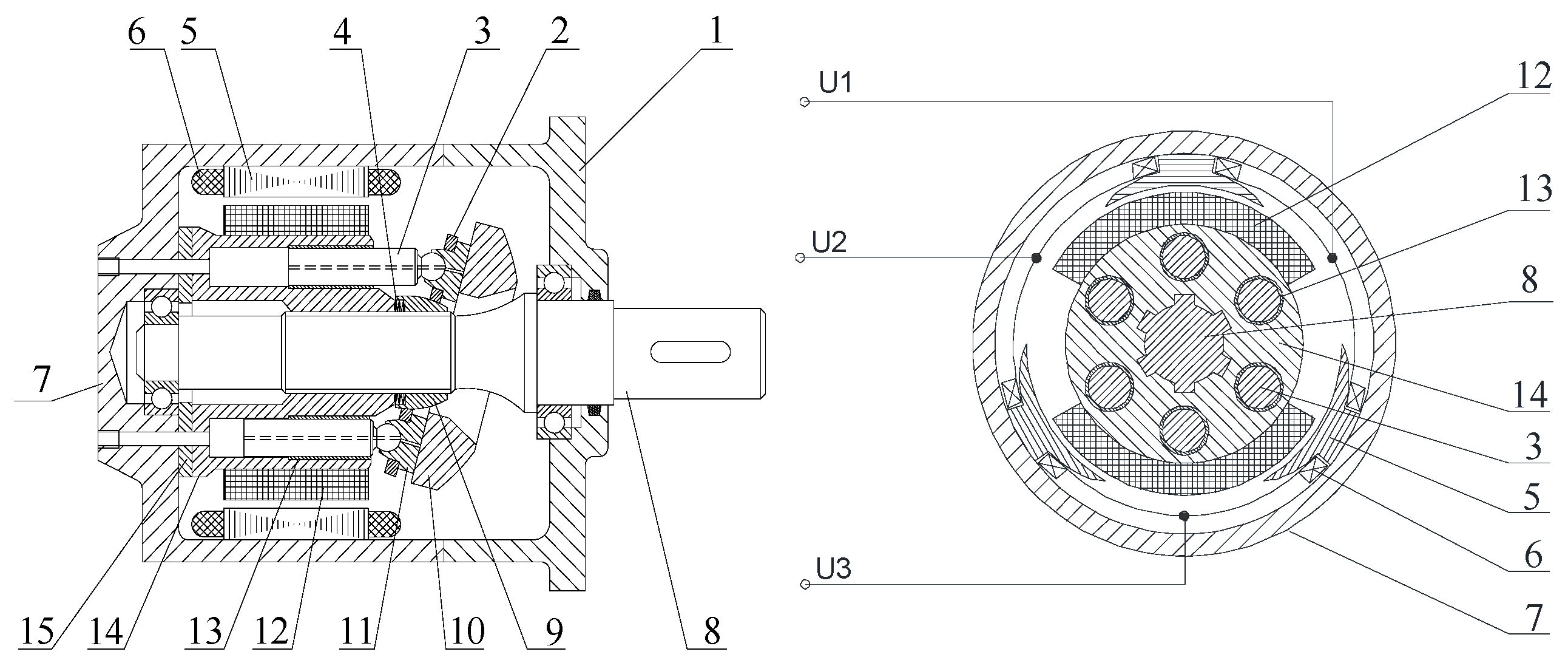
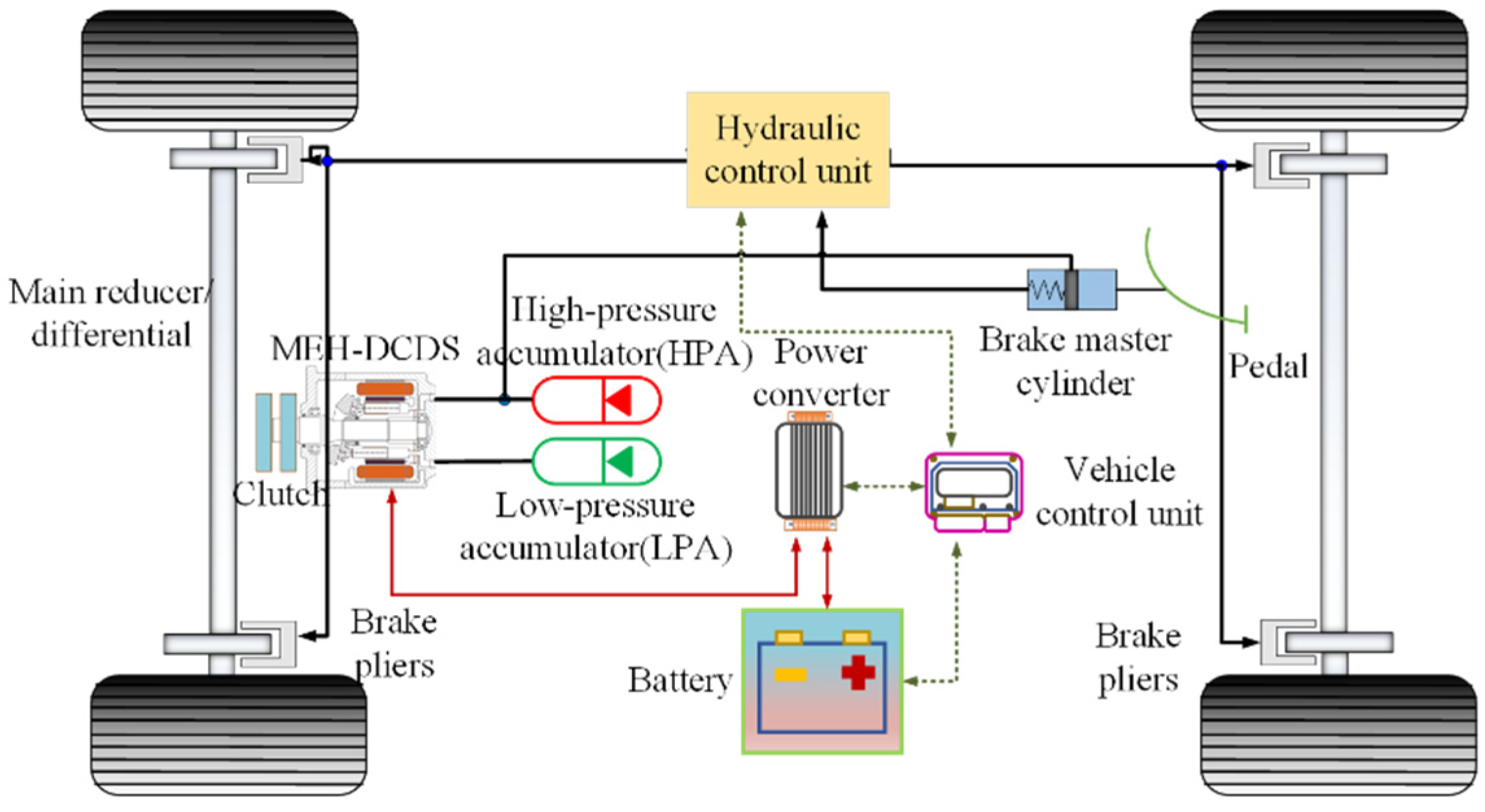
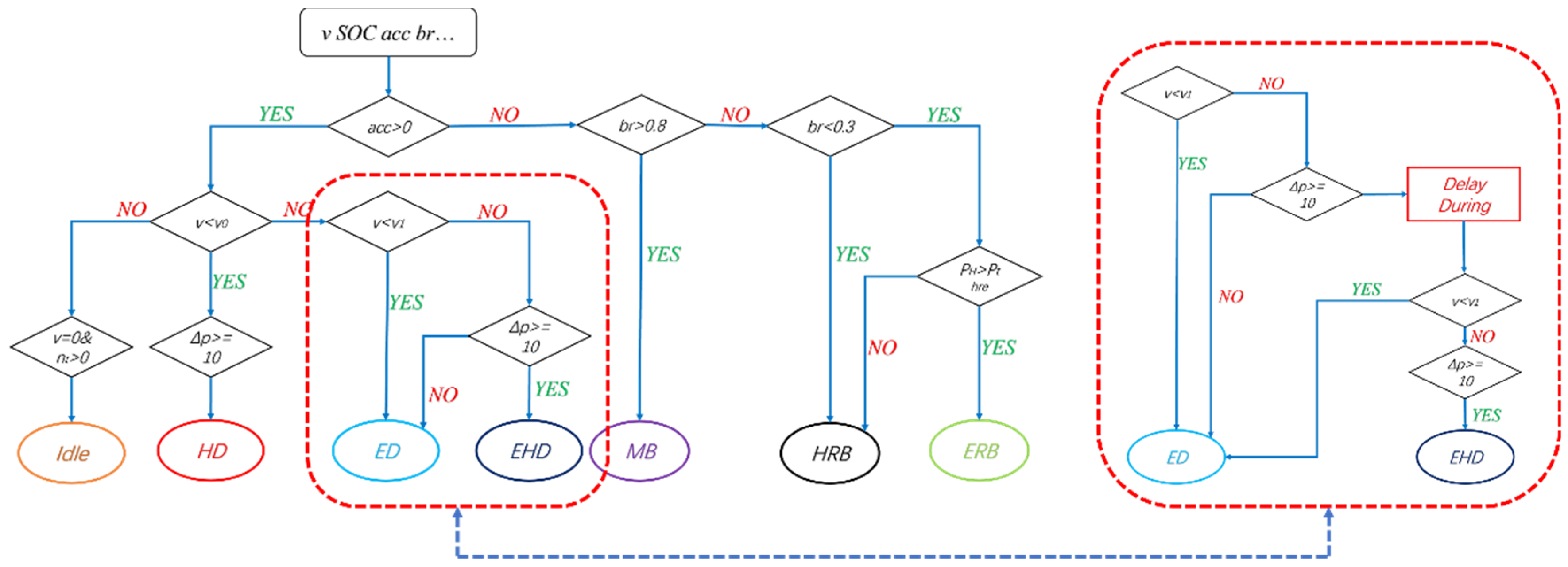



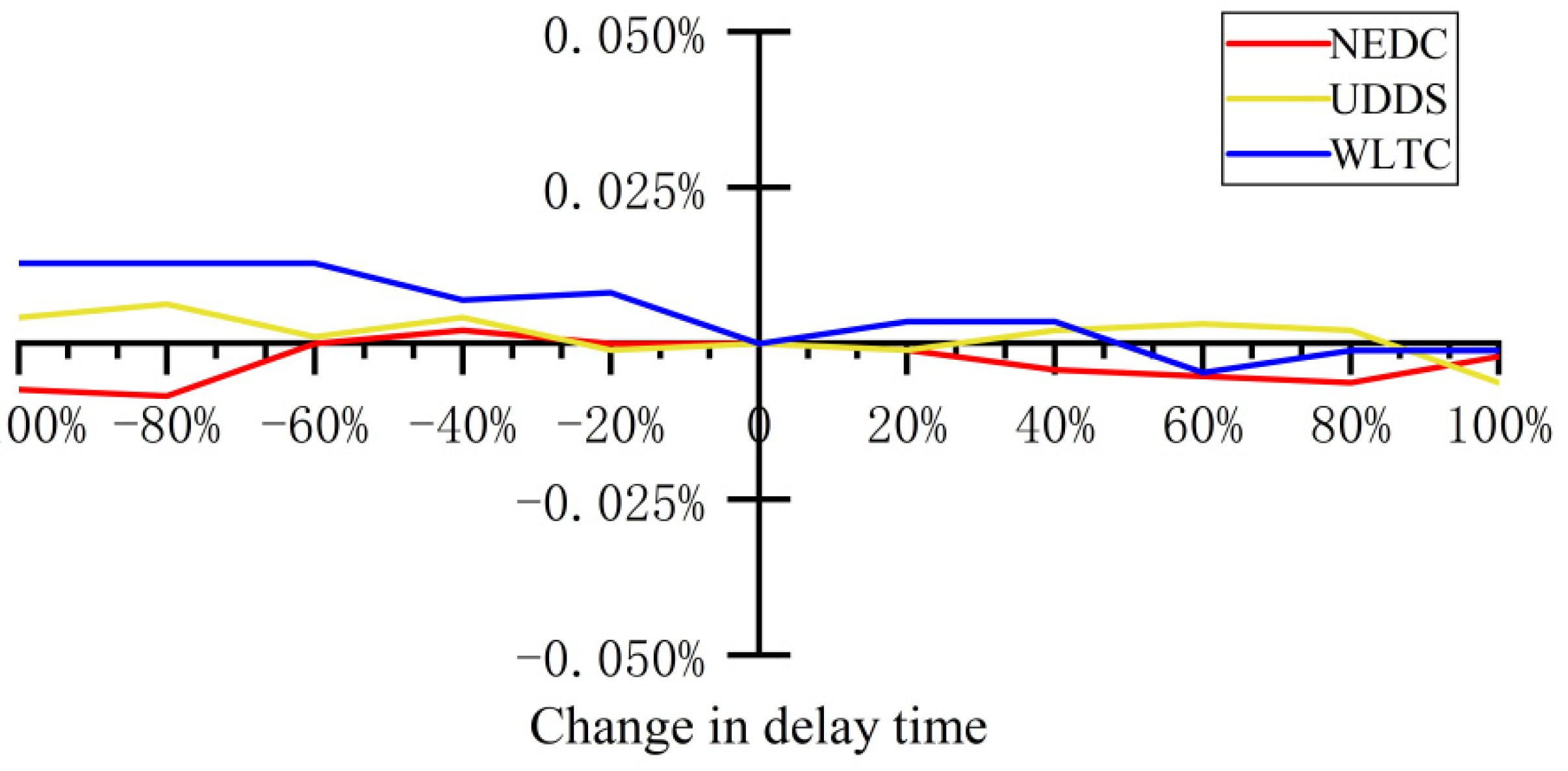
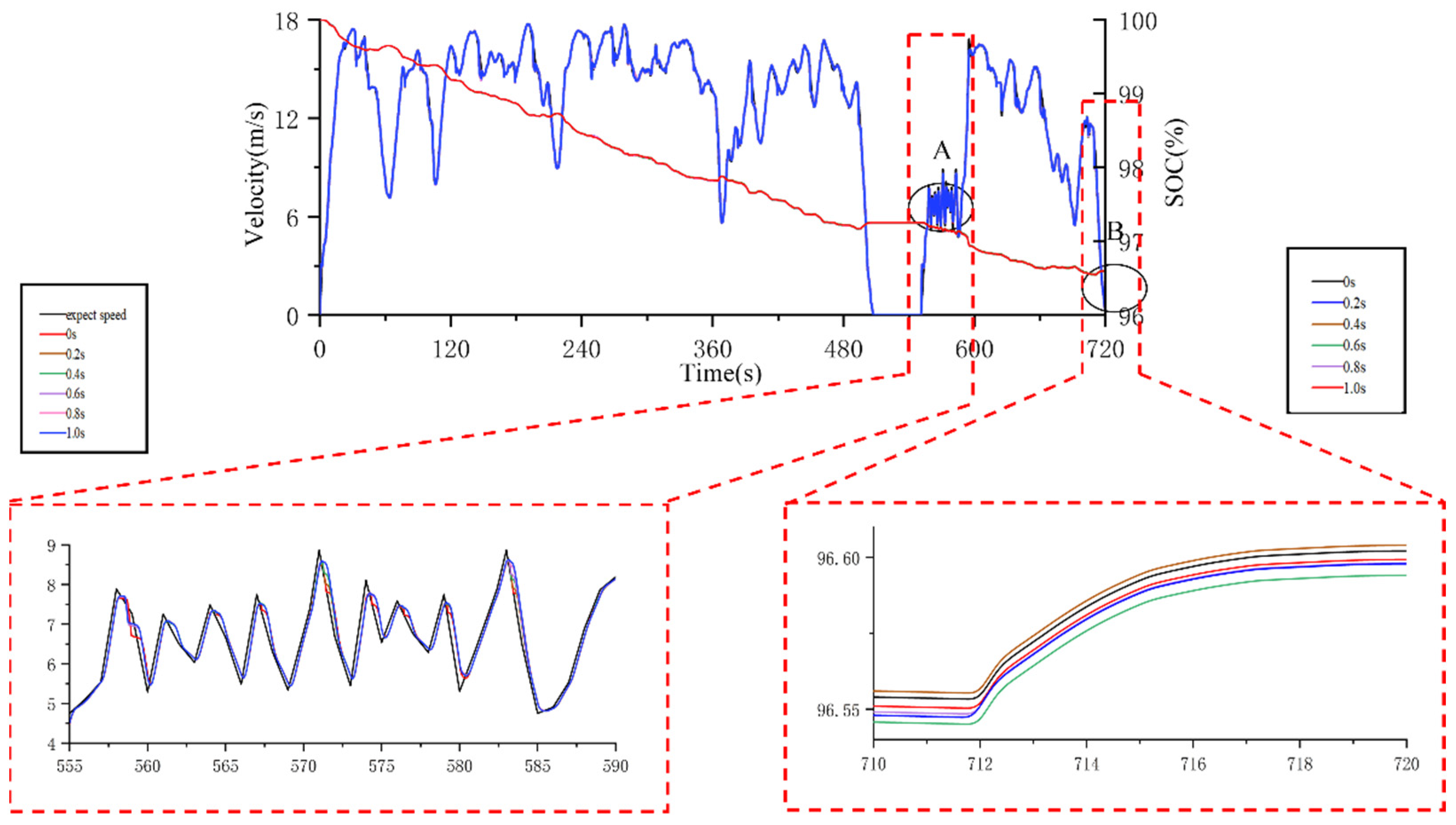
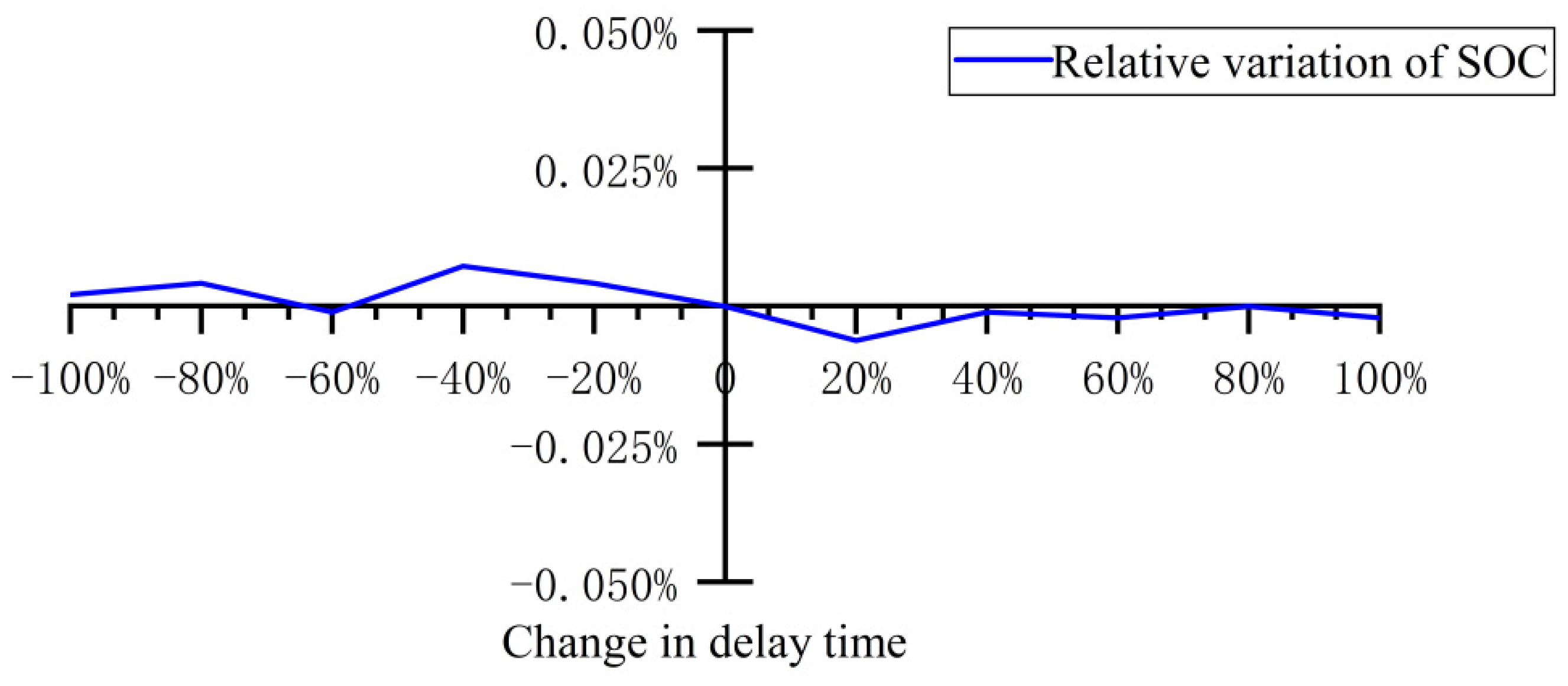

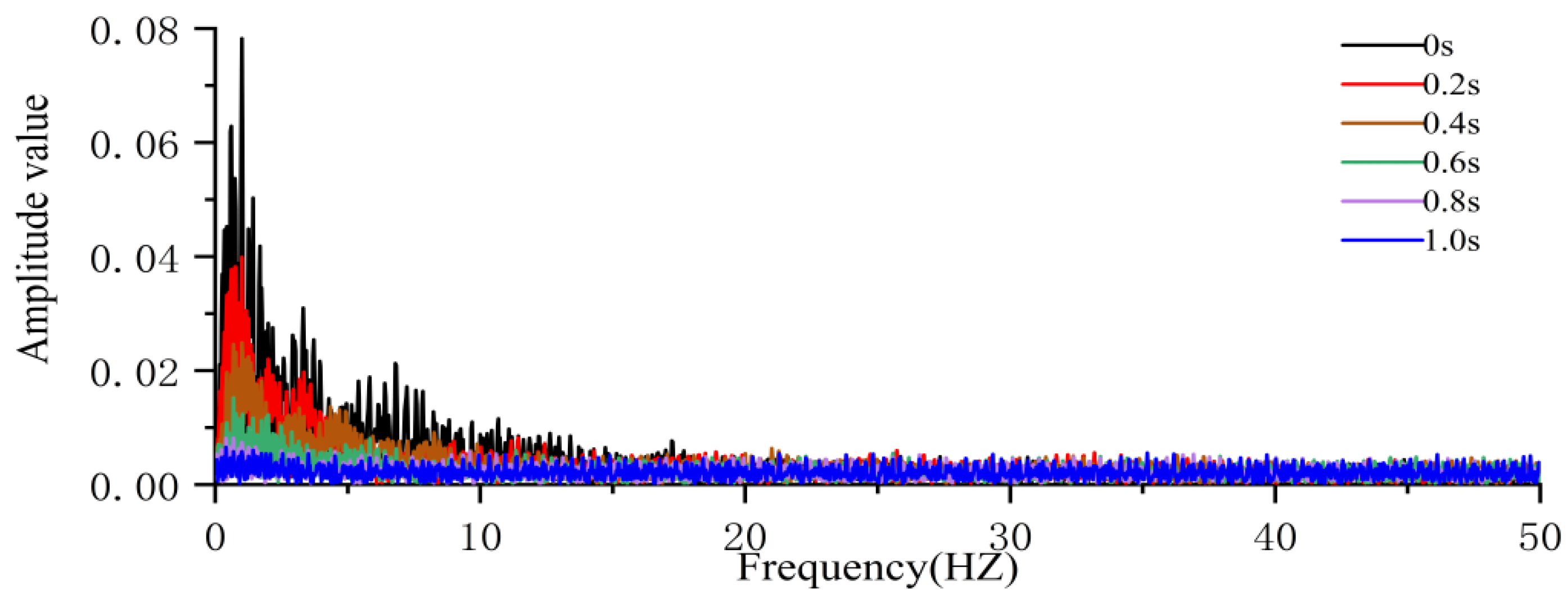

| Researchers | Contribution | Year |
|---|---|---|
| Liu, H., Y. Jiang, and S. Li | Designed an electrohydrostatic hybrid power system, proposed a downhill speed control method | 2019 |
| Hu, J., B. Mei, H. Peng, and Z. Guo | Proposed a discrete speed ratio control strategy for the characteristics of a hydraulic system with high-energy loss | 2019 |
| Gong, J., D. Zhang, Y. Guo, C. Liu, Y. Zhao, P. Hu, and W. Quan | Proposed a new electrohydraulic system integrating recovery and regeneration devices | 2019 |
| Liu, H., G. Chen, C. Xie, D. Li, J. Wang, and S | Study of the energy-saving characteristics of electrohydrostatic hybrid railcars | 2020 |
| Yang, J., T. Zhang, H. Zhang, J. Hong, and Z. Meng | Start-up acceleration characteristics of a new power-coupled electric vehicle | 2020 |
| Yang, J., T. Zhang, J. Hong, H. Zhang, Q. Zhao, and Z. Meng | Proposed a new drive control strategy and fuzzy logic optimization study for electric vehicles | 2021 |
| Hong, J., F. Ma, and X. Xu | Characteristics of a new power-coupled electric vehicle considering different electrohydraulic distribution ratios | 2021 |
| Component Name | Parameter Name | Value |
|---|---|---|
| Entire vehicle | Full load mass/kg | 1206 |
| Main reducer | 5 | |
| Rolling resistance coefficient | 0.0135 | |
| Air resistance coefficient | 0.32 | |
| Wheel width/mm | 290 | |
| motor | Maximum motor speed/r·min−1 | 6000 |
| Peak power/kW | 30 | |
| Actual power/kW | 20 | |
| Battery | Peak power/kW | 220 |
| Voltage/V | 310 | |
| Battery capacity/Ah | 65 | |
| Secondary element | Displacement/mL·r−1 | 30 |
| Torque/N·m | 140 | |
| Peak power/kW | 70 | |
| High-pressure accumulator | working pressure/MPa | 22–35 |
| Precharge pressure/MPa | 10 | |
| Initial volume/L | 35 | |
| Low-pressure accumulator | working pressure/MPa | 12.5–21 |
| Precharge pressure/MPa | 10 | |
| Initial volume/L | 35 |
Publisher’s Note: MDPI stays neutral with regard to jurisdictional claims in published maps and institutional affiliations. |
© 2022 by the authors. Licensee MDPI, Basel, Switzerland. This article is an open access article distributed under the terms and conditions of the Creative Commons Attribution (CC BY) license (https://creativecommons.org/licenses/by/4.0/).
Share and Cite
Liu, S.; Zhang, H.; Yang, J. Mode Switching Frequency of Electrohydraulic-Power-Coupled Electric Vehicles with Different Delay Control Times. Electronics 2022, 11, 1299. https://doi.org/10.3390/electronics11091299
Liu S, Zhang H, Yang J. Mode Switching Frequency of Electrohydraulic-Power-Coupled Electric Vehicles with Different Delay Control Times. Electronics. 2022; 11(9):1299. https://doi.org/10.3390/electronics11091299
Chicago/Turabian StyleLiu, Shuo, Hongxin Zhang, and Jian Yang. 2022. "Mode Switching Frequency of Electrohydraulic-Power-Coupled Electric Vehicles with Different Delay Control Times" Electronics 11, no. 9: 1299. https://doi.org/10.3390/electronics11091299
APA StyleLiu, S., Zhang, H., & Yang, J. (2022). Mode Switching Frequency of Electrohydraulic-Power-Coupled Electric Vehicles with Different Delay Control Times. Electronics, 11(9), 1299. https://doi.org/10.3390/electronics11091299






